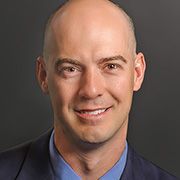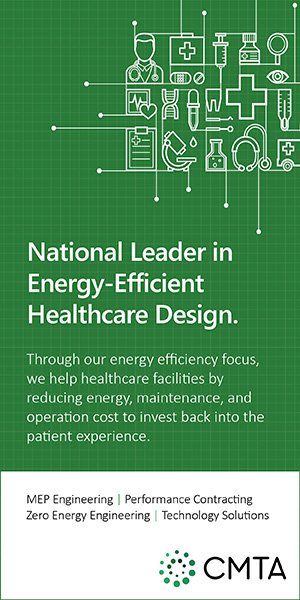Interview
Treating Complex Sports Medicine Pathologies
Corey A. Wulf, MD, Twin Cities Orthopedics Bioengineering Lab
Please tell us about the mission of the new Twin Cities Orthopedics Bioengineering Lab.
Part of TCO’s mission, from the time of our inception, was to advance orthopedic care for our community. This has been accomplished by providing cutting-edge, evidence-based care to our patients along with a long history of research and education. The TCO Bio Lab is the next step in that commitment. The lab will provide the resources needed to perform basic science research which is critical to the development of new technologies and surgical techniques. In addition to being able to provide bench-to-bedside answers for treating complex sports medicine pathologies in the research portion of the lab, it will also allow surgeons to hone their skills and develop improved surgical procedures in the Bioskills Lab. This lab will also provide one of the top opportunities for resident and fellow education in the country.
An important component of this mission focuses on Bioskills. Please discuss some of this work.
We host our own Sports and Foot/Ankle Fellowships. The TCO Bio Lab will be an advanced training area to support these Fellowships, and it will also be a facility that trainees, fellows and curious surgeons from across the country can come together to learn new techniques and technology advancements right here in Minnesota. There are still so many questions that we are exploring in regard to optimal implant design, fracture care and reconstruction techniques. We can now provide our faculty and fellows the opportunity to pursue answers that ultimately enhance patient care. In addition, we will be open to outside vendors hosting lab training sessions and conferences. From testing new tools to the latest technology, our space will allow for true innovation and will give surgeons the opportunity to try out new techniques before bringing them into the operating room.
What are some of the reasons there can be a considerable lag time between when significant advances in medical science, such as the direct anterior minimally invasive hip replacement procedure, become part of best practice nationwide?
There are often multiple reasons for the delay between pathology and treatment. For example, it may be due to a knowledge gap in understanding the pathology, or that the pathology is well understood, yet doesn’t have an adequate solution/treatment. The TCO Bio lab can be utilized to address both issues. Accurately defining anatomy, understanding the functional stresses and strains on native anatomic structures during normal activity and comprehending their failure modes are essential in defining appropriate treatment and, more important, in preventing future occurrences. Developing treatment strategies, such as anatomical reconstruction, and being able to test their effectiveness prior to implementation in patients can reduce lag time and, theoretically, minimize complications and poor outcomes. Finally, in regard to a procedure such as an anterior approach to hip replacement, a technique that has been developed after the majority of practicing surgeons did not have exposure during their training, the lab provides an access point to learn and practice the technique in a cadaveric setting and reduces the barriers to implementation for those surgeons through education and exposure.
There are numerous university-based bioengineering programs, as well as many in the private sector. How do you foresee collaborating with these colleagues?
Collaboration brings the best ideas and resources together. This can advance discovery and increase the power of studies by creating larger data sets. There are numerous examples of multi-institutional/center studies that have been able to identify significant findings that could not be demonstrated by smaller data sets despite being well designed. We have already started collaborating with physicians from other centers by allowing them to come in and use our Robotic Joint Testing system to analyze complex problems and find solutions. This is a specialty piece of equipment that allows us to be on the forefront of orthopedic research, and we believe allowing other groups to use it alongside our experts can lead to key advancements.
We’re in constant collaboration with the Training HAUS Sports Science Lab located next door and nationally recognized for excellence. Together, our innovative industry leaders will work to gain a broader understanding of joint mechanics.
Collaboration also allows complex problems to be broken into subsets of simpler questions. This allows for parallel exploration with simpler designed studies that can be investigated simultaneously. The subparts are then shared and reconstructed to solve the more complex problem more quickly quicker than what could’ve been done on one’s own. TCO looks forward to collaborating when the opportunity arises.
Collaboration brings the best ideas and resources together.
There are a number of advances in joint mechanics, including robotic testing. Please tell us about some of this work.
Human anatomy is inherently complicated. Orthopedic surgeons are making continual advancements to recreate the functional anatomy that existed prior to an injury or degenerative process. Our Robotic Joint Testing system is a tool found in only a handful of labs across the country and is used to perform mechanics testing on cadaveric joints to simulate their functionality more accurately. Having the robotics component allows for us to test various surgical techniques, implants and soft tissue reconstructions to gain a better understanding of how well we are able to recreate functional anatomy. Restoring native range of motion and joint function can help patients return to the activities they love.
How does the lab plan to incorporate 3D printing into its research?
3D printing technology has revolutionized the way medical research is conducted, especially in the area of implantable devices. We are incorporating 3D printing into our research by creating implantable devices and surgical tools that facilitate repair and healing in novel ways. This technology can be used to design and produce custom hardware quickly and cost-effectively, allowing for more rapid development of new medical devices.
Some examples of the custom hardware that can be created using 3D printing include cutting guides, retractors and reamers. These devices can be printed using metal materials, and the lab’s goal is to produce surgical instrument prototypes that can be used in the operating room. This approach can help to expedite the device design and production process compared to traditional machining methods, which can be time-consuming and expensive.
The lab plans to use 3D printing technology to create and test new medical devices for proof of concept and FDA approval. This process can be much faster than traditional methods, which can take months or even years to complete. By using 3D printing technology, the lab can create and test multiple iterations of a device in a shorter period of time, which can ultimately lead to faster and more effective medical treatments.
Please tell us about the work you are doing with joint mechanics and soft tissues.
When we think of orthopedics, the first thing that comes to mind is bones. However, the musculoskeletal system is much more complex than just bones. It includes a variety of structures such as ligaments, tendons and cartilage, as well as nerves and other soft tissues. Understanding the complex interactions between these structures is critical to developing effective treatments for musculoskeletal injuries and diseases.
Our initial goals in this area are to better understand the mechanical interactions of these structures. The lab plans to use a variety of techniques, including biomechanical testing, imaging and modeling, to study these structures and their functions.
Another area of focus will be on understanding the role of soft tissues, such as ligaments and tendons, in joint stability and mobility. These structures are critical for maintaining joint integrity and transferring forces between bones and muscles. By studying the mechanical properties of these structures and their interactions with other joint structures, the lab hopes to develop new treatments for ligament and soft tissue injuries.
What types of improvements to implantable devices are you working on?
Implantable devices have revolutionized the field of orthopedics by providing effective treatments for a variety of musculoskeletal injuries and diseases. However, there is always room for improvement when it comes to these devices, and we are actively working on developing new and improved implantable devices.
One area of focus for the lab is improving the mechanical characteristics of implantable devices. This includes load to failure, which is a measure of how much stress a device can withstand before it breaks or fails, and fatigue failure that occurs when a device breaks down over time due to repeated loading and unloading. By improving these characteristics, the lab hopes to develop devices that can withstand higher loads and last longer in the body.
In addition to these areas of focus, the lab is also working on developing new and innovative implantable devices that can provide better outcomes for patients. This includes devices that can be customized to individual patients, devices that can promote tissue regeneration and repair, and devices that can be used in minimally invasive procedures.
Overall, the lab is focused on developing implantable devices that are safer, more effective and longer-lasting, and that can provide better outcomes for patients with musculoskeletal injuries and diseases. By leveraging the latest advances in materials science, engineering and medical research, the lab is making significant contributions to the field of orthopedics.
How can physicians get involved with this new research facility?
A lot of doctors, and other healthcare professionals, end up finding personalized ways to care for orthopedic patients. Sometimes these innovations are viable improvements of standard best practice. These pioneers may want to share and develop their ideas, but do not have the resources or connections to move forward. We can provide assistance in these instances. Further opportunities exist around fine-tuning surgical and diagnostic skills, keeping up with the latest scientific advances, and even improving rehabilitation practices. We were designed to advance the field of orthopedic medicine and are here to collaborate with our colleagues in the field in any way that is possible.
Corey A. Wulf, MD, is a surgeon at Twin Cities Orthopedics with specialized sports medicine training. He played a key role in the development of the Twin Cities Orthopedics Bioengineering Lab.
MORE STORIES IN THIS ISSUE
cover story one
Long COVID: Facing a shadow pandemic
By KATE MURRAY, MPH, AND RUTH LYNFIELD, MD
cover story two
Privatized Medicaid and MinnesotaCare: Bills could lead to review of zombie programs















